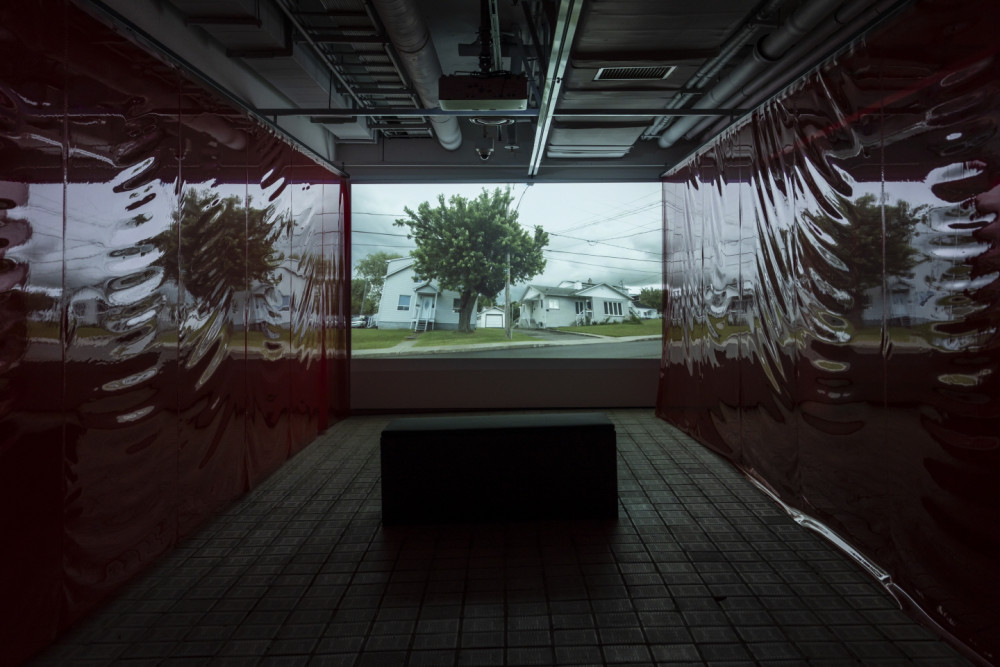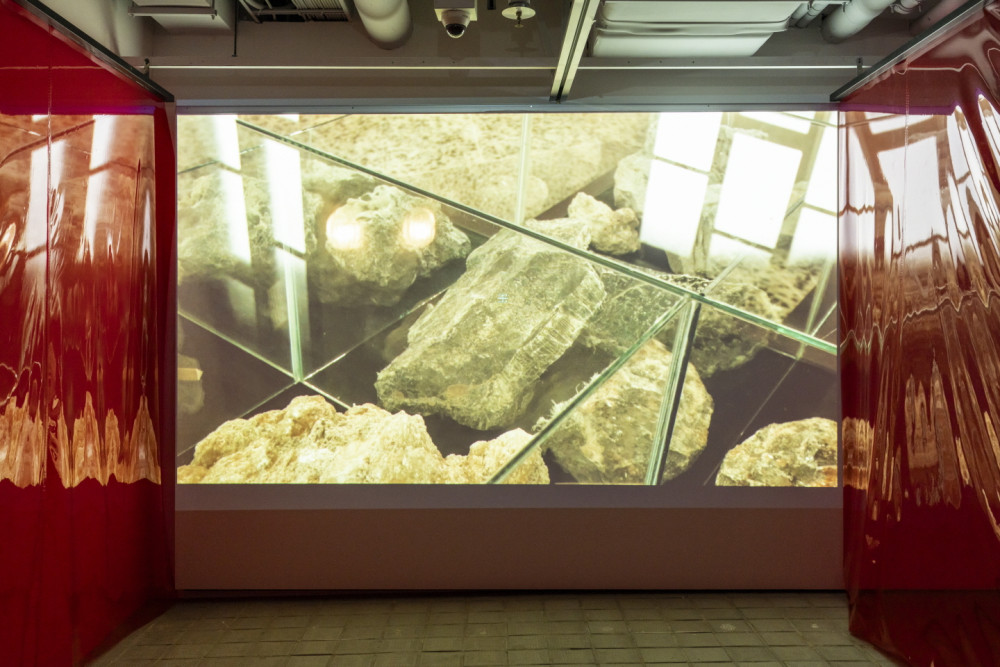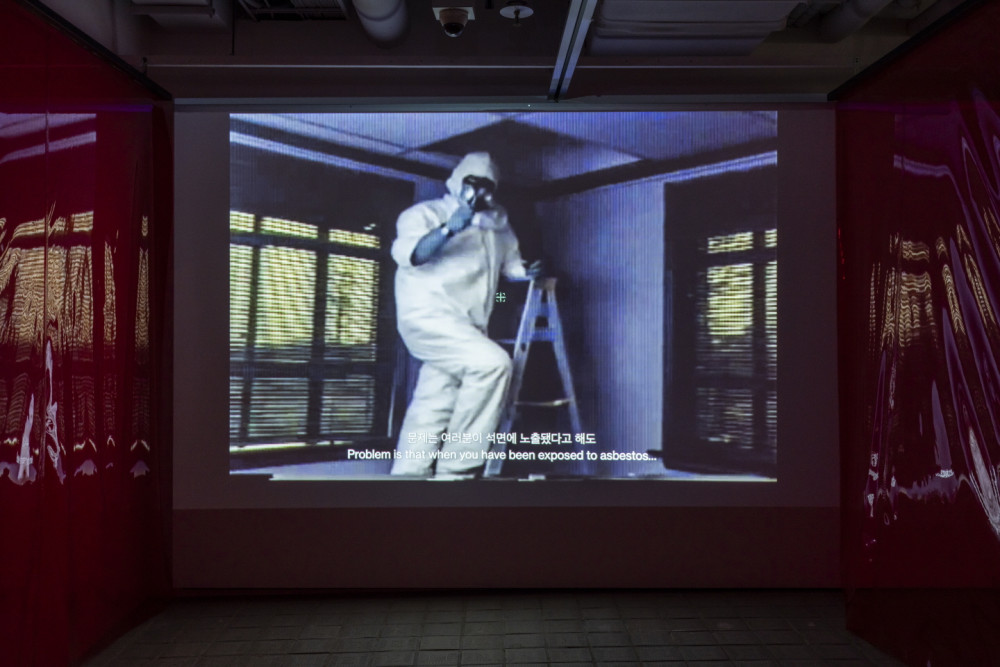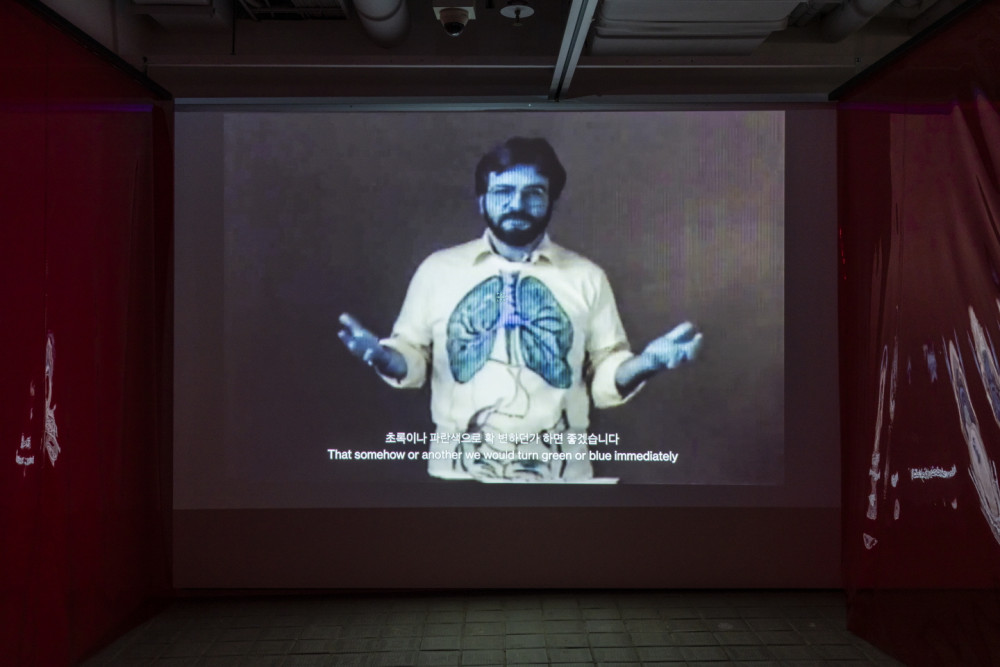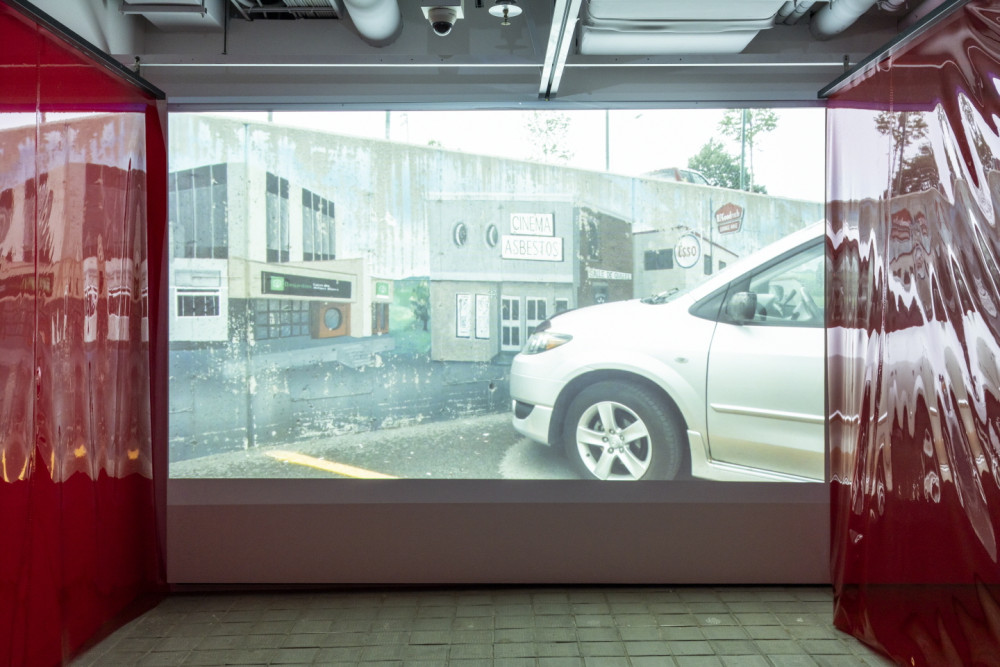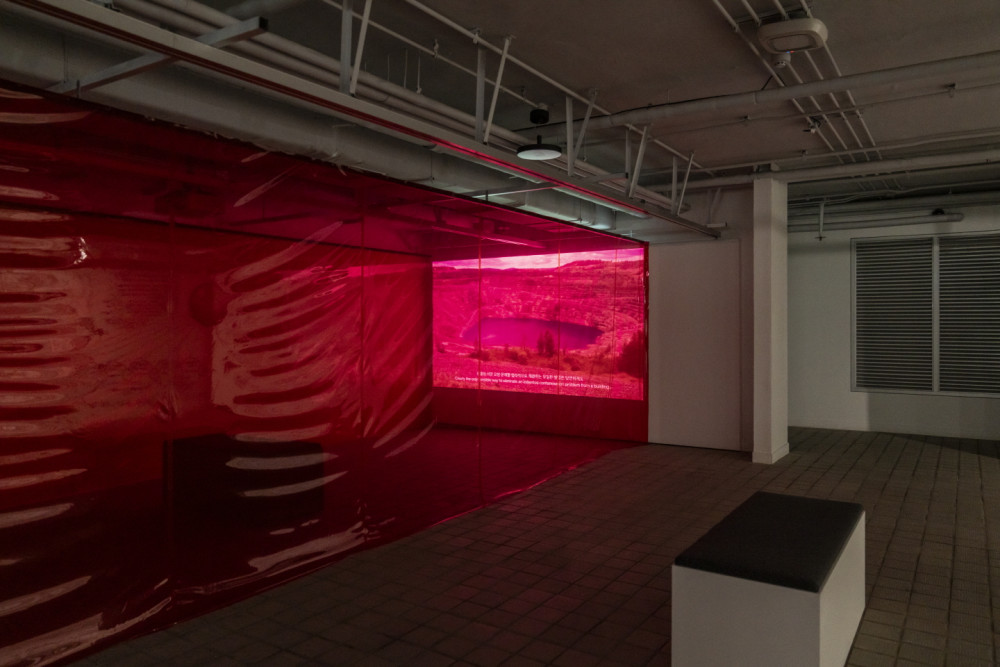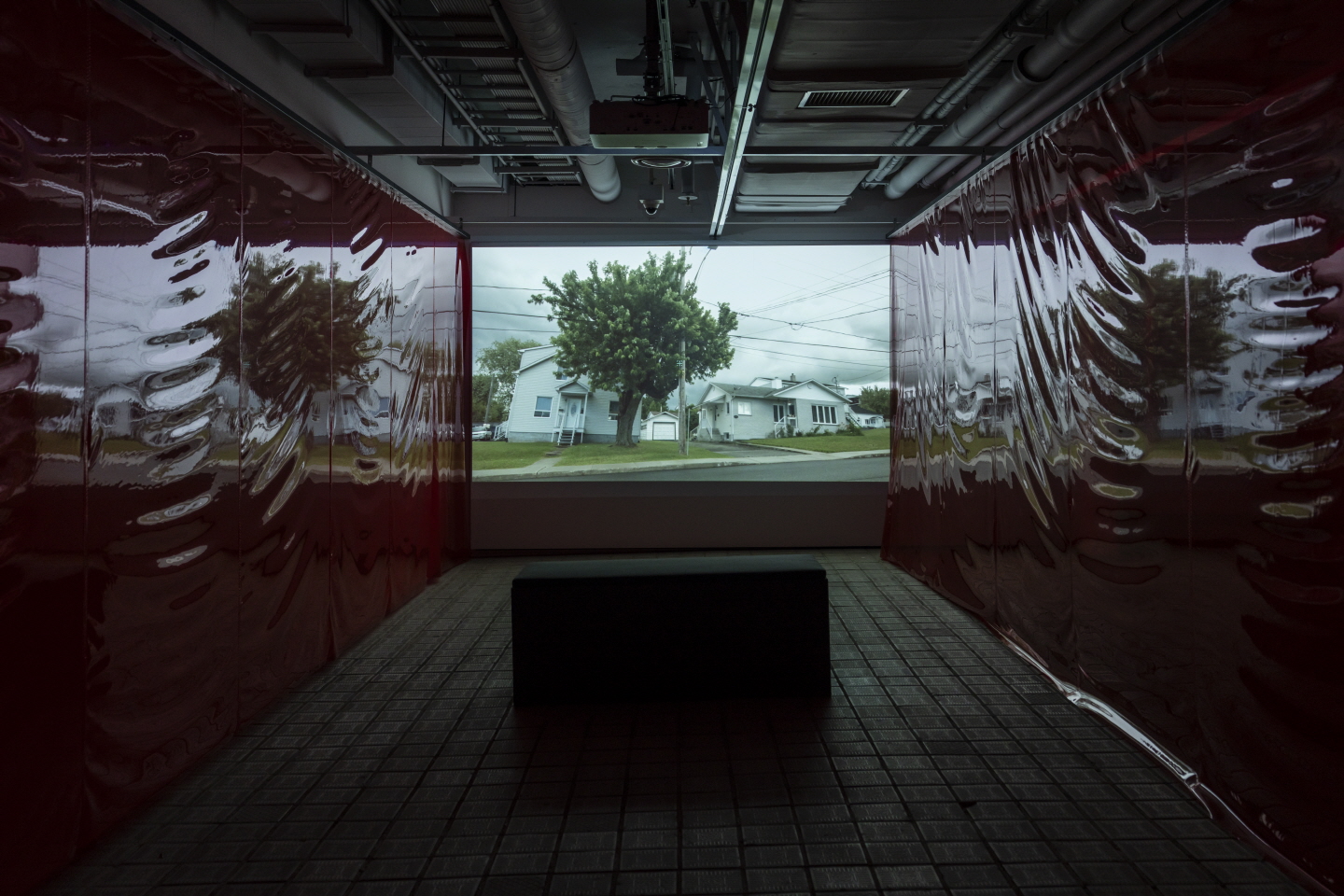
Asbestos, a collaboration between Sasha Litvintseva and Graeme Arnfield, traces the toxic legacies of material extraction. Historically, asbestos was mined and processed for installation in massive industrial construction projects and homes around the world. However, modern developments in science and technology through the creation of the electron microscope have revealed the substance’s toxicity, resulting in the revision of its reputation from the fireproof magic mineral to a catastrophe in waiting. Airborne and invisible to human eyes, asbestos enters human bodies through the respiratory system and its effects can be lethal. While the world’s largest asbestos mine in Asbestos, Quebec, Canada closed in 2012, the asbestos industry has far from left us with extraction from the soil transforming to extraction from our walls. We are now faced with two options: to remove this hazardous material from our homes and start anew, or to build upon its residue. Often costly to remove, new industries of abatement have emerged, where the material is covered in plastic tarping to limit its potential spread. In Asbestos, the camera cuts between embodied firstperson found footage of asbestos abatement workers navigating toxic interiors and static locational images of the town of Asbestos (as of 2020 Valdes Sources) and its decommissioned asbestos mine. Such stories inevitably lead to questions about the reciprocal existence of asbestos and human beings, the vulnerability of the human body, the legacy of industrial mining, and social responsibility.
